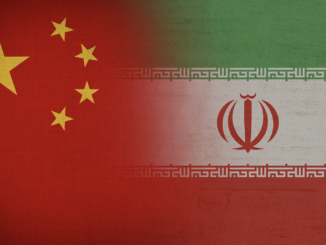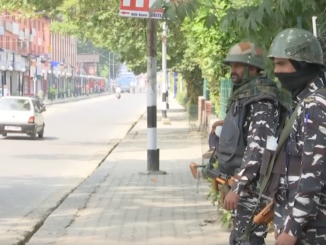Robert Kaplan in his treatise Revenge of the Geography tells us about the impending conflicts and the “battle against fate”. He delves into the impact of geography on the political, social, and economic dynamics of the nations, signposting the global power struggles. Despite technological advancements, geography continues to shape international relations. Interestingly, Kaplan’s focus has been on the Persian Gulf, besides the South China Sea and the Eastern European nations. Creating historical linkages, the author also discusses the nexus between geography and demography influencing international and cross-border relations. Despite some criticism, the book continues to act as a vital guide for assessing the role of geography in global power relations.
Baluchistan is the latest yet appropriate candidate for the geographic analysis. Geographically, Baluchistan is the largest yet least populated province of Pakistan. Pakistan’s largest province Baluchistan shares borders with all three provinces, two international borders (with Iran and Afghanistan), and the Arabian Sea – making it a special candidate for robust governance. The presence of a Sunni majority in Baluchistan and a sizable Sunni presence in the adjacent (Shia dominant) Iranian provinces of Sistan-o-Baluchistan makes cross-border relations challenging.
This vast geographic hinterland has been a favorite route for almost all outlaw activities including smuggling of goods, commodities, food items, and human trafficking. Most of these flows are directed inward to Pakistan less the usage of this dangerous route for human smuggling/illegal immigration westwards from Pakistan. The area is also marred by rampant terrorism and the presence of multiple violent non-state actors on both sides.
In a series of uncanny events, Iran attacked Pakistani soil in the bordering town of Panjgur, allegedly against Jaish al Adl – a terrorist group blamed for launching attacks on Iranian soil. This provocation certainly put Pakistan’s sovereignty into question. Failure to respond to such incursion portrays Pakistan as weak whereby its sovereignty could be infringed upon by other regional “aspirants” such as India and Afghanistan. Pakistan responded in kind within less than 48 hours.
The historic foreign policy relationships between the Persian region and its eastwards neighbors during the 16th Century were dominated by the Mughal Empire(1526-1857) and the Safavid Empire in Iran (1501-1736). Mughal Empire founder Babur was of Turkic-Mongol descent (lineage to Timur from father’s side and Genghis Khan on his mother’s side), creating a connection between the Mughals and Turks. In contrast, Safavids were of Persian origin, and the ruling dynasty emerged from a Sufi order with their leaders aspiring to establish Persian culture with political and linguistic dominance. Mughals, despite their Turkic origin, embraced Persian culture, literature, and art, architecture, and Farsi became the language of the Mughal court. The Safavids on the other hand reinforced their distinct Persian culture and identity, however, the adoption of Twelver Shia Islam distinguished them from the dominant Sunni Islam of the Ottoman Turks and the Mughals.
This uneasy relationship continued to manifest through the territorial conflicts between the Ottoman Turks and Safavid Empires. Some of the historical examples of territoriality conflicts between the two dominant Middle Eastern powers of the time can be found in control of Mesopotamia with the city of Baghdad being the focal point, within shifting frontiers in borderlands of Eastern Anatolia and Western Iran, in the Caucasus regions, diluting the effect of this buffer zone between the two rivals, and the conflicts over control of Tabriz in Azerbaijan. Despite prolonged periods of this uneasy and conflictual relationship, one cannot miss the Treaties of Amasya (1555) and Zuhab (1639), playing vital roles in the creation of a geographical landscape in the region that continued to shape their interactions for centuries to come.
After the creation of Pakistan, Iran was one of the first countries to recognize its independence. Early interactions between the two countries were generally positive, and both nations were members of many regional organizations fostering cultural and economic ties. The Iranian Revolution in 1979, the Russo-Afghan War (1979-1989), and the Iran-Iraq War (1980-1988) significantly altered the regional foreign policies and religious, economic and political landscape. The cooperation between both neighbors remained collaborative with the Iran-Pakistan-India pipeline being the highlight.
However, global conflicting interests in the region especially after the US invasion of Afghanistan in 2000 created cleavages in this relationship. American regional policies were dominated by (presumably unforgettable) 1979 Iranian Hostages Crisis and the Iranian official anti-Israel stance expressed by Ahmadinejad and many other Iranians. Despite a clear leaning towards American interests and policies, Pakistan exercised a great degree of restraint and statesmanship to prevent frustrating Iranian interests. Not only that, Pakistan performed some serious patchwork in the Saudi-Iran détente, especially after the initiation of the Saudi-Yemen War in 2014.
It is noteworthy that Pakistan has a 10-15% Shia population. As per a 2008 survey by PEW 2/3rd of the Pakistanis (almost 67%) expressed a positive view about Iran – the highest figures for Iran among all surveyed countries. Despite that, Pakistan has shown serious concerns over the trail of terrorism in Pakistan traced back to Iran in cases such as Kulbhushan Jadhav, and other Indian/anti-Pakistan elements operating against Pakistan out of Iran.
Unlike the traditional Iranian characteristic tough- diplomacy witnessed during the 20 months-long JCPOA negotiations, recently, more erratic and retaliatory behavior has been witnessed coming from Iran. However, the latest aggression is a sign of growing Iranian desperation and frustration exhumed through ballistic missile attacks on Erbil a Kurdish town in Iraq, Idlib in Syria, and Panjgur in Pakistan. The irony of geography is that it cannot be changed, therefore Iran must continue to breathe within the same neighborhood. Iranian attacks against these neighboring Muslim countries are baffling yet worrying and highlight the futility of these actions. A critical analysis of these retaliations (presumably) against the Western hostility against Iranian interests in the Arabian Sea (Yemen), and by Israel in the Middle East, raises serious questions about the Iranian ambitious desirability of the revival of the Policeman of the Persian Gulf syndrome (although, this time, a theocratic one…).




Be the first to comment